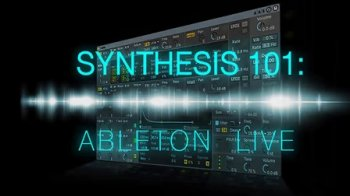
In this course you will learn the principles behind the most common forms of synthesis.
Most of the content covered is transferable to other synthesizers so you’ll be a synth ninja before you know it!
if you are a beginner and are intimidated by all those knobs and controls on synthesisers,
or if you have been making music for a while but want to be able to move beyond the presets and create your own sounds then this is the course for you!
There’s also practical example patches demonstrating how you can design common types of sounds such as basses, leads and pads.
So are you ready?
Lets get into it!
Project 1: Create a Bass Patch
Based on what you have learned in Subtractive Synthesis videos create a bass patch.
Your bass patch should contain the following parameters:
•A low octave tuning of the oscillators
•Some use of low pass filtering
•Some modulation of the filter’s cut off frequency
Project 2: Create a Lead Patch
Based on what you have learned in Subtractive Synthesis videos create a lead patch.
Your lead patch should contain the following parameters:
•A fast attack and release for the amplitude envelope
•A high sustain for the amplitude envelope
•Some harmonic modulation (e.g. an envelope modulating the oscillator’s sync amount).
Project 3: Create a Pad Patch
Based on what you have learned in FM Synthesis videos create a pad patch.
Your pad patch should contain the following parameters:
•A slow attack and release for the amplitude envelope
•Some modulation of the harmonic content (e.g. an LFO modulating the FM amount).
Project 4: Create a Lead Patch
Based on what you have learned in FM Synthesis videos create a lead patch.
Your lead patch should contain the following parameters:
•A fast attack and release for the amplitude envelope
•A high sustain for the amplitude envelope
•Some harmonic modulation (e.g. an envelope modulating the FM amount).





